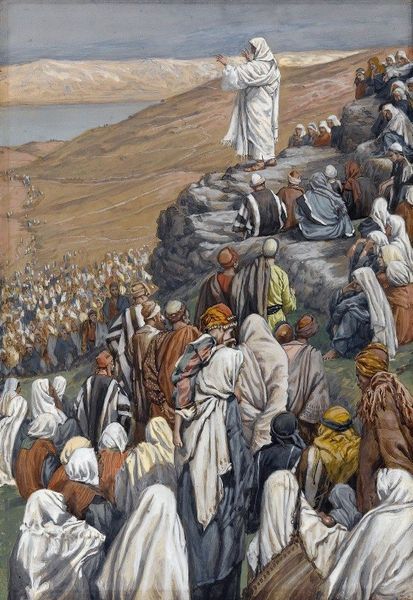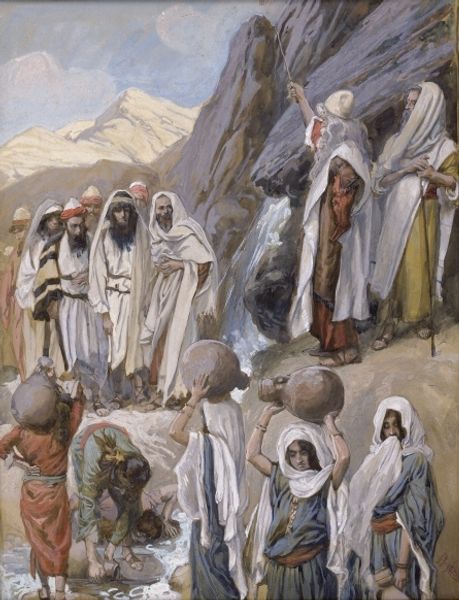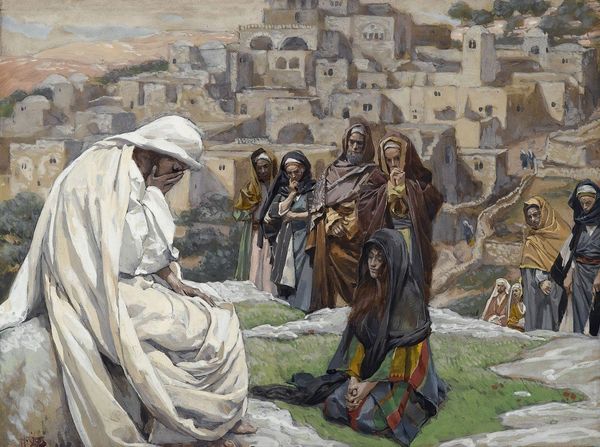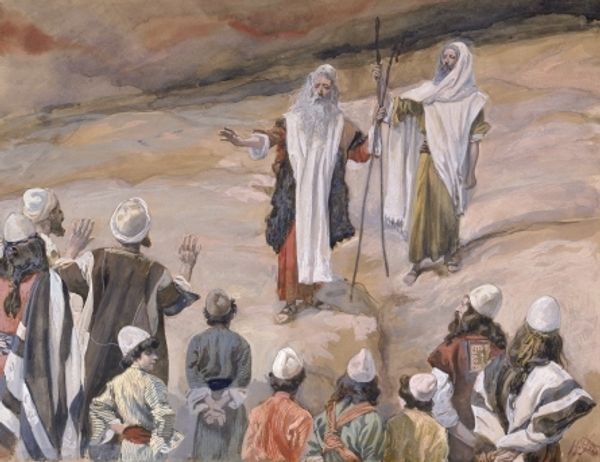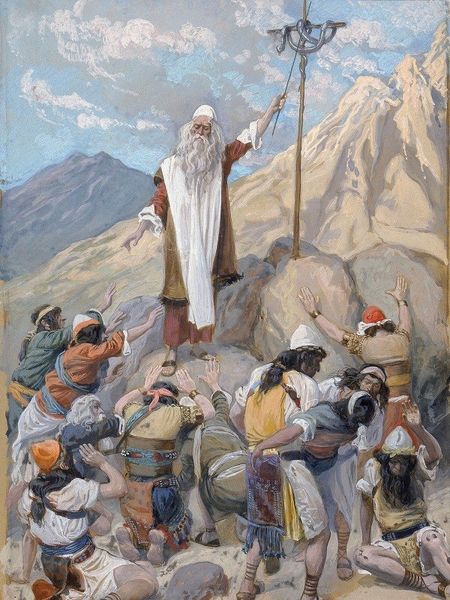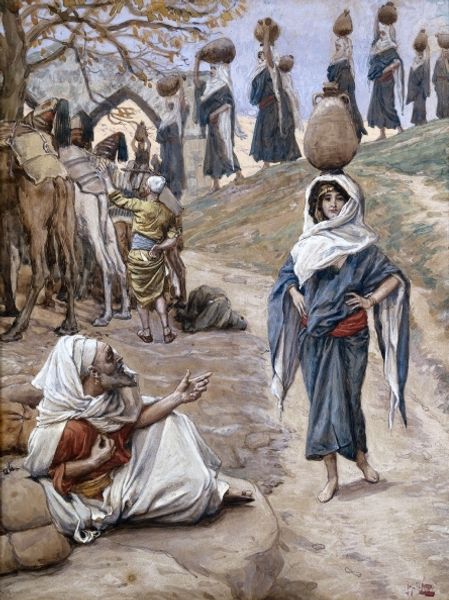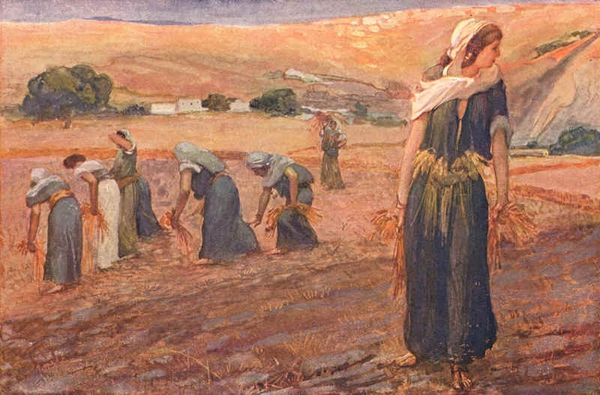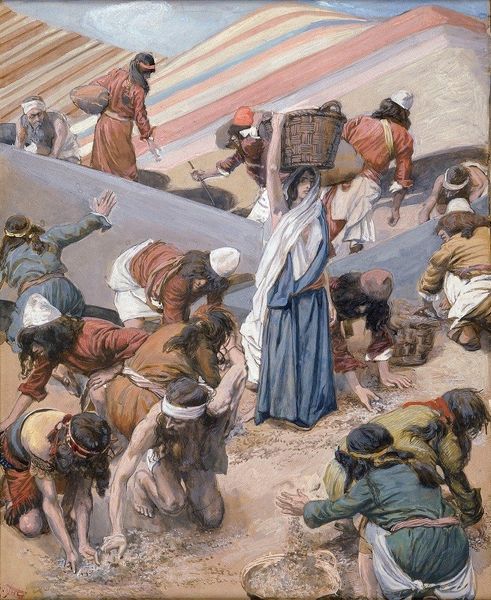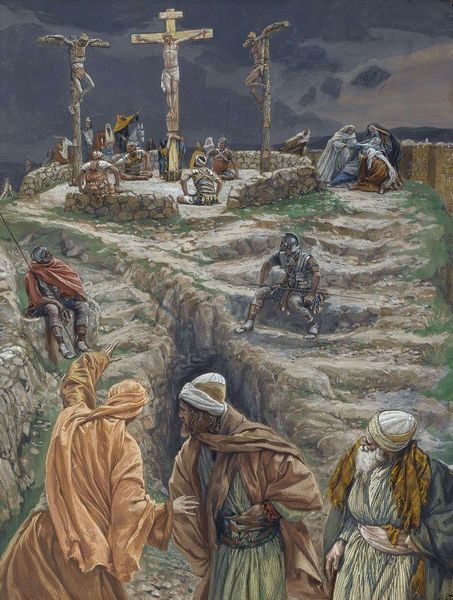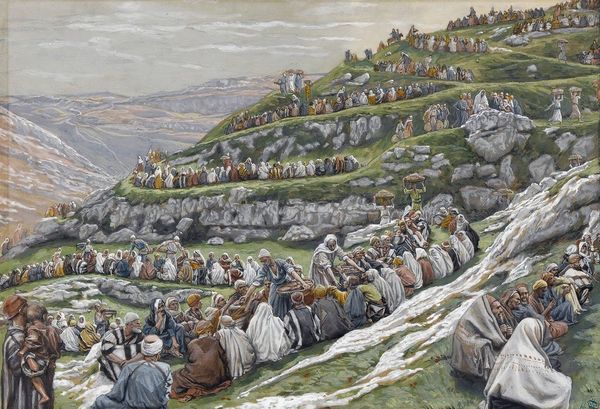
watercolor
#
narrative-art
#
landscape
#
oil painting
#
watercolor
#
watercolour illustration
#
genre-painting
Copyright: Public domain
Curator: Well, hello there. What strikes you first about this image? Editor: Dust. And apprehension. I mean, look at the slumped figures in the foreground; you can almost feel their weariness, the grit between their teeth. But then, looming in the background is that army – is that an army? Curator: It is indeed! This watercolor by James Tissot, completed in 1902, depicts the moment Jacob sees his brother Esau approaching with armed men. The piece is titled 'Jacob Sees Esau Coming to Meet Him'. Tissot’s later career was marked by his illustrations of Biblical scenes, wasn't it? He aimed for historical accuracy, informing his art by traveling to the Middle East to research customs, dress and landscapes. Editor: That explains the… muted palette? It’s less "religious art" and more…reportage, almost. And those huddled figures definitely bring it into our emotional present. Curator: Tissot was working at a time when increased archeological exploration and the rise of anthropology created a demand for such portrayals. They promised viewers authenticity – albeit seen through a Western European lens. Editor: The detail is impressive for watercolor – almost photographic in that vast procession. Yet the soft hues create an otherworldly haze; a perfect emotional counterpoint for the heavy anxiety etched on the figures we see. It asks a lot of the viewer doesn't it? To reconcile all of that in a single moment. Curator: It invites us to reflect on the power dynamics and cultural assumptions inherent in representing historical events. Look at who is granted prominence and whose perspective dominates the narrative, for example. Editor: You know, I came here expecting stained-glass romanticism, and instead I’m face-to-face with a scene pregnant with very modern ambiguities. Thank you, James. Curator: A fitting reminder that seeing, truly seeing, is always an act of interpretation, isn’t it?
Comments
No comments
Be the first to comment and join the conversation on the ultimate creative platform.
